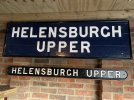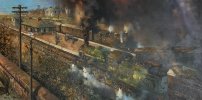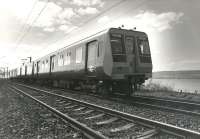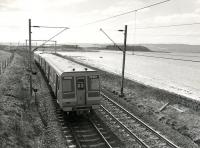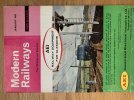Ah yes. When I was working in Glasgow in the 1970s, in a most junior capacity but indeed in an architects' office, a colleague commuted in from Helensburgh, and made a significant fuss about these express services. He was as junior as me, but I think lived with his family. It must have been quite a timetabling exercise to fit these trains in, worse than getting the West Highland diesel services to interleave, and seemed to be achieved by heading off various other services just where they joined or started - in theory. But there were periodic late arrivals at his desk and overlong explanations in Reginald Perrin style about what had transpired that morning. Not too often, but I recall a few. The timings were a bit compressed for normal office hours, I seem to recall a necessary dash at not later than about 5.18pm (and we finished at 5.30) to hotfoot the 10 minutes down to Charing Cross to catch the last fast. Must have been galling to see its tail lights disappear into the tunnel ...Helensburgh Upper is situated in the most affluent area of this most affluent town but - prior to the replacement of loco-hauled trains by Sprinters in the late 1980s - the first Up departure wasn't until 10 33 (07 55 or 08 00 from Oban)....so not much use for commuting to Glasgow. As a result, many of the doctors, lawyers, architects, business magnates and other professionals who inhabited the large detached villas surrounding the Upper station would walk down the hill to Helensburgh Central in the morning to catch one of the 'express' electric trains (08 10 and 08 29 approximately) into Glasgow,
From that self-same architects office, I wish to apologise to you locals for the outcome of the 1970s station rebuildings at some of those lesser Glasgow Underground stations, being done at adjacent desks, and indeed for minor tracing and shading at mine. Past posts by me refer to this. It was an early experience of 'down to a budget'.

